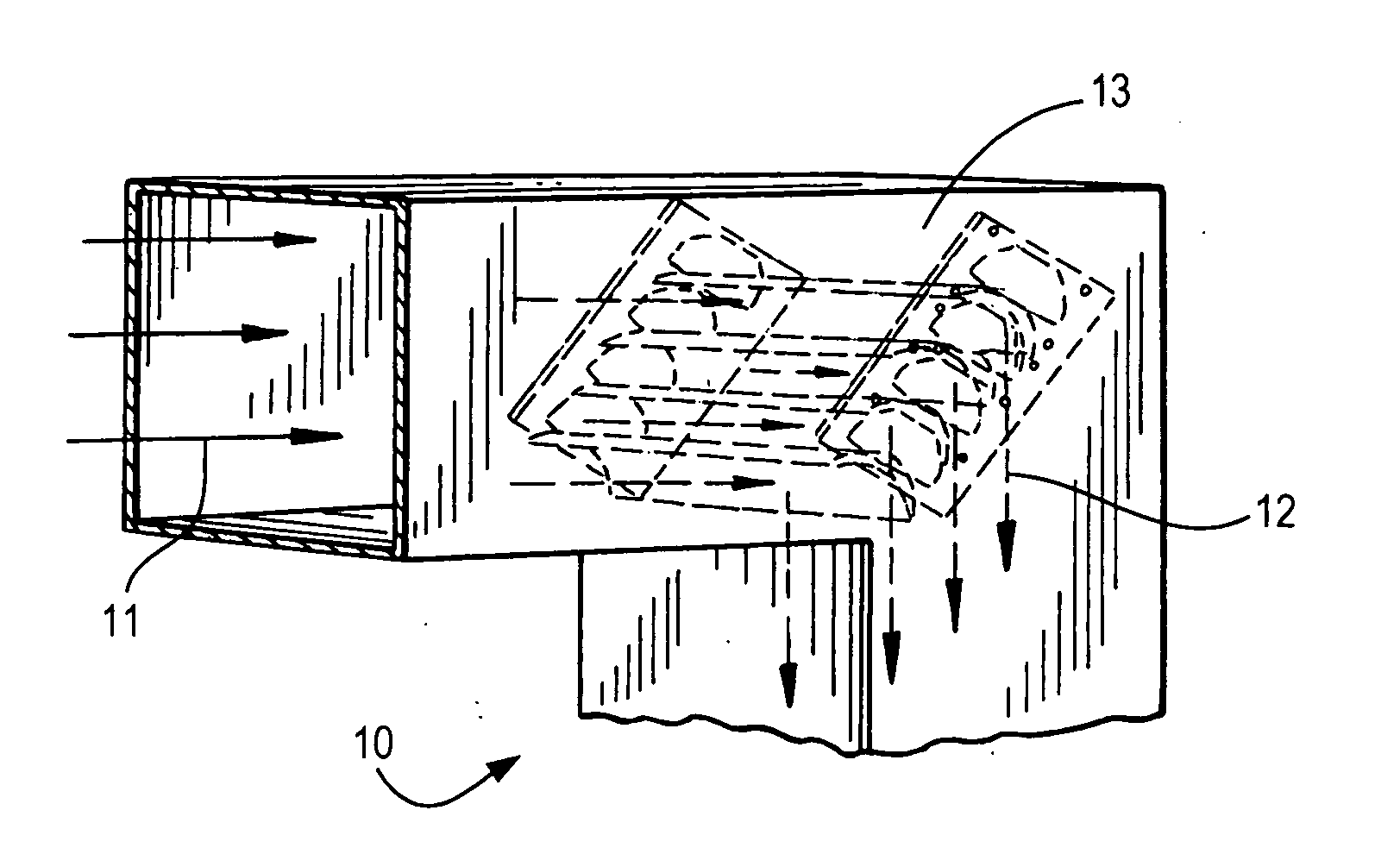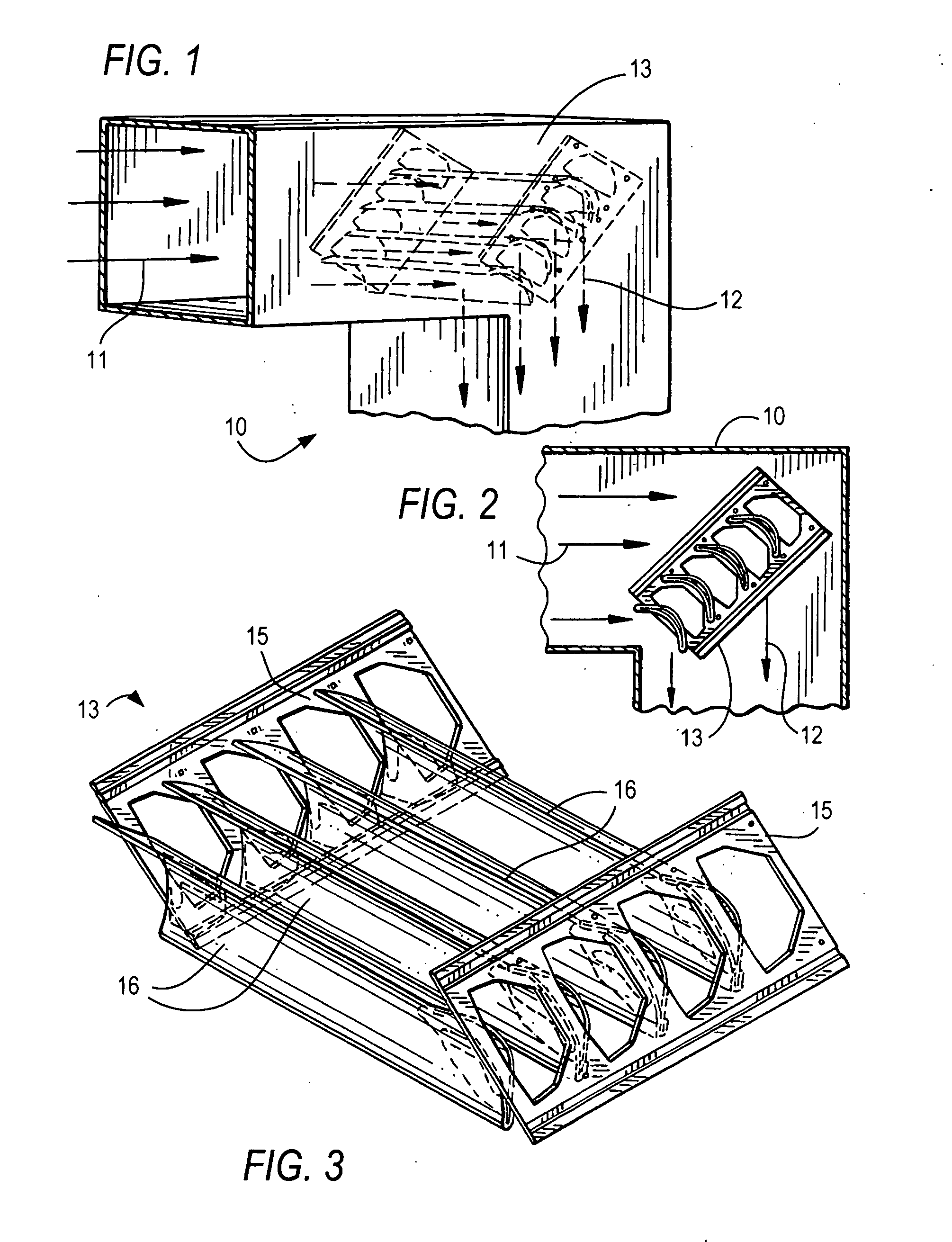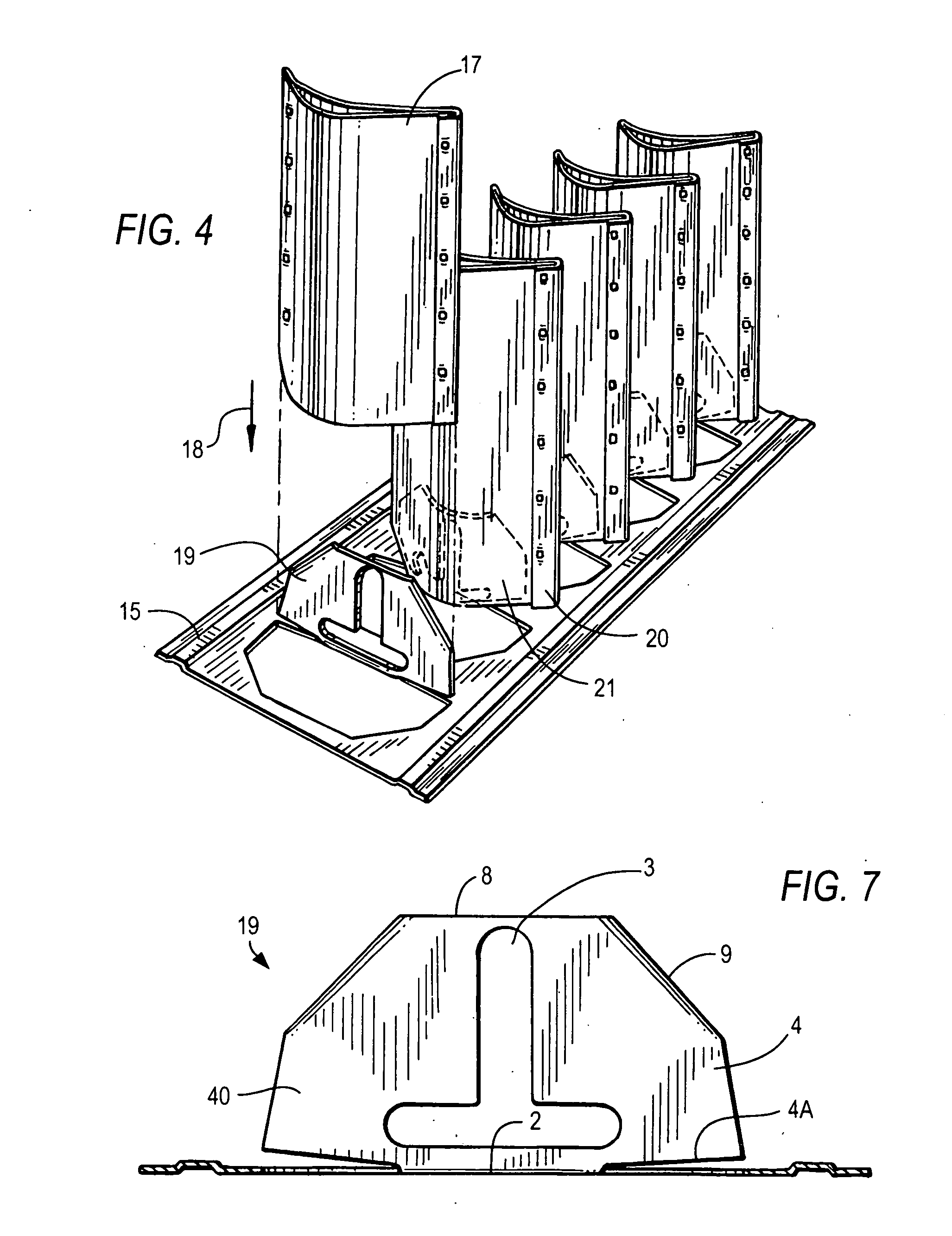Turning vane for air duct
a technology of air ducts and turning vanes, which is applied in the direction of lighting and heating apparatus, space heating and ventilation details, heating types, etc., can solve the problems of substantial pressure loss and/or undesirable vibration and noise, and achieve the effects of strong and inexpensive, easy assembly and installation, and strong and reliable after installation
- Summary
- Abstract
- Description
- Claims
- Application Information
AI Technical Summary
Benefits of technology
Problems solved by technology
Method used
Image
Examples
Embodiment Construction
[0056]FIGS. 1 and 2 illustrate a typical air duct 10 which includes a right angle turn, thus requiring air flow 11 to make a 90° turn to continue as air flow 12. Turning is efficiently achieved through turning vane assembly 13, as further described below.
[0057]FIG. 3 shows a fragmentary view of the turning vane and rail assembly 13 comprising spaced apart rails 15 to which are attached turning vanes 16.
[0058]Attachment of each turning vane 16 to one rail 15 is illustrated in FIG. 4, where vane 17 is moved in the direction of arrow 18 toward upward-extending tab 19 which is punched and bent 90° out of the plane of rail 15. Also in FIG. 4 is shown an adjacent vane 20 descending downward on its corresponding tab 21 and secured thereto.
[0059]FIGS. 5, 6 and 7 are top, side elevation and end elevation views respectively of one rail 15 with tabs 22, 23, 24 and 25. As seen in FIGS. 5 and 6, tab 22 is in its initial punched but not-bent state, tabs 23 and 24 are bent into their erect positio...
PUM
 Login to View More
Login to View More Abstract
Description
Claims
Application Information
 Login to View More
Login to View More - R&D
- Intellectual Property
- Life Sciences
- Materials
- Tech Scout
- Unparalleled Data Quality
- Higher Quality Content
- 60% Fewer Hallucinations
Browse by: Latest US Patents, China's latest patents, Technical Efficacy Thesaurus, Application Domain, Technology Topic, Popular Technical Reports.
© 2025 PatSnap. All rights reserved.Legal|Privacy policy|Modern Slavery Act Transparency Statement|Sitemap|About US| Contact US: help@patsnap.com



